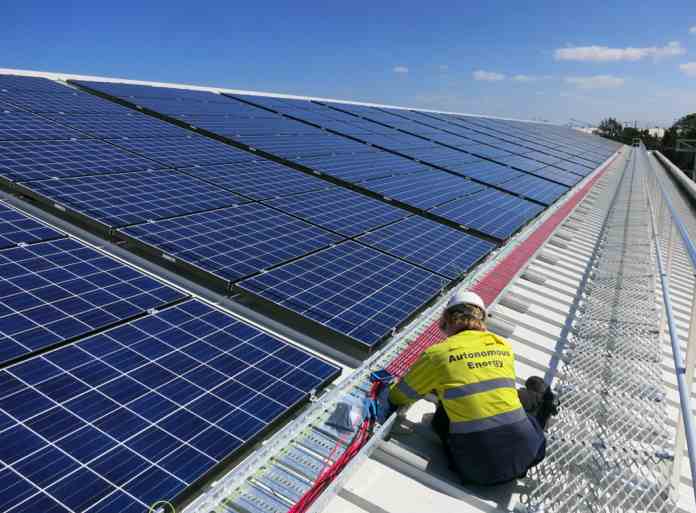 Toyota Australia’s Melbourne manufacturing plant is now host to a 500kW rooftop solar system, after the project was completed by Sydney-based engineering firm Autonomous Energy, this week.
Toyota Australia’s Melbourne manufacturing plant is now host to a 500kW rooftop solar system, after the project was completed by Sydney-based engineering firm Autonomous Energy, this week.
Autonomous announced on Monday it had finished installing 2000 Kyocera PV panels on the roof of the Altona North engine factory, completing the largest roof-mounted PV system in Victoria, and the third largest in the country.
According to Toyota, the array is the first in Australia to directly connect to an industrial site’s internal high voltage network via a single 500kW central inverter and transformer, manufactured by ABB.
The system – which will be launched officially on Thursday, which will also be World Environment Day – is expected to generate enough energy to power the equivalent of 200 households.
The project – which had government support via the the Clean Technology Investment Fund – is considered to be an important demonstration of Toyota’s commitment to environmental sustainability, clean manufacturing and innovation.
“This installation is an excellent example to other businesses that large scale solar installations should be implemented not only to help the environment, but also to benefit the bottom line,”said George Phani, National Manager at Kyocera Solar, which is headquartered in Sydney.
So far, commercial solar has yet to hit it straps in Australia, stifled by a mess of government policy that has created unnecessary complexity and distorted the market. However, further deals are in the pipeline, if talk at last month’s Australian Solar Conference is correct.
Bloomberg New Energy Finance analysts recently declared that rooftop solar – both residential and commercial – had become an unstoppable force in the Australian market, that could see around 23GW of solar PV installed by 2030.
Last month, Swedish furniture giant Ikea announced plans to install 3.9MW of rooftop solar PV systems across all of its Australian east coast stores and warehouses, a project that would result in the nation’s largest commercial solar development so far.
The project – which will see more than 16,000 panels installed across IKEA Australia’s five stores in Queensland, Victoria and New South Wales, as well as two merchandise pick-up locations – will have an annual output of 5,495 million kilowatt hours (MWh) of electricity; enough to power 778 family homes for a year.










